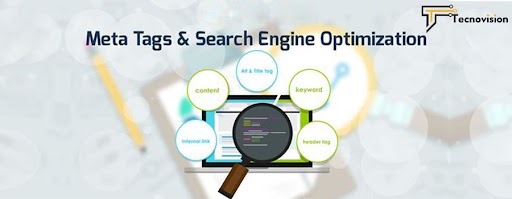In the ever-evolving landscape of Search Engine Optimization (SEO), meta tags play a fundamental role in helping search engines understand and rank web pages. These snippets of HTML code provide valuable information about a web page’s content and can influence how a page appears in search engine results. In this comprehensive guide, we’ll delve into the world of meta tags, exploring what they are, how they work, and their various types and uses in SEO.
Understanding Meta Tags
Meta tags are elements of HTML code that are embedded in the head section of a web page. They are not visible to the website’s visitors but serve as a means of communication between the web page and search engines. Essentially, meta tags provide information about the content on a web page, helping search engines understand and categorize the content.
The Importance of Meta Tags in SEO
Meta tags are crucial for SEO for several reasons:
Improved Search Engine Rankings: Meta tags, when used effectively, can help boost a page’s search engine rankings. Search engines like Google use the information provided in these tags to determine a page’s relevance to specific search queries.
Enhanced Click-Through Rates (CTR): An appealing meta title and description can entice users to click on a search result, increasing the click-through rate. A well-crafted meta description can be the difference between a user choosing to visit your site or a competitor’s.
Better User Experience: Accurate and informative meta tags make it easier for users to find the information they need. This aligns with Google’s goal of delivering a better user experience, which can indirectly impact your search engine ranking.
Types of Meta Tags
There are several types of meta tags used in SEO. Let’s explore some of the most common ones:
Meta Title Tag (Title Tag): The title tag is perhaps the most critical meta tag. It appears in the search engine results as a clickable link and provides a brief description of the page’s content.
Meta Description Tag: The meta description is a brief summary of the web page’s content. It appears beneath the title tag in search engine results and can greatly influence a user’s decision to click on your page. An enticing, informative description can lead to higher CTR.
Meta Keywords Tag (Deprecated): In the past, the meta keywords tag was used to list relevant keywords for a page. However, search engines no longer consider this tag for ranking purposes, as it was often abused by spammers. It’s now largely obsolete.
Meta Robots Tag: The meta robots tag instructs search engine crawlers on how to interact with a page. It can be used to tell search engines whether to index a page, follow links on a page, or avoid crawling it altogether.
Meta Canonical Tag: This tag is used to specify the canonical URL of a page. It helps prevent duplicate content issues and informs search engines which version of a page should be considered as the authoritative source.
Meta Viewport Tag: While not a traditional SEO tag, the meta viewport tag is essential for ensuring a responsive and mobile-friendly design. It controls how a web page is displayed on various devices and screen sizes.
Meta Open Graph Tags (OG Tags): These tags are primarily used for social media optimization (SMO). They control how a page’s content is displayed when shared on platforms like Facebook and Twitter, allowing for more appealing and structured previews.
Best Practices for Meta Tags in SEO
To harness the power of meta tags for SEO, it’s essential to follow some best practices:
Keyword Optimization: Include relevant keywords in your title and description tags. However, avoid keyword stuffing, as this can lead to penalties from search engines.
Unique and Descriptive Titles: Each page should have a unique and descriptive title tag that accurately represents its content. Aim for clarity and conciseness.
Compelling Descriptions: Write engaging meta descriptions that encourage users to click on your link.
Correct Length: Keep your titles under 60 characters and meta descriptions under 155 characters to ensure they display correctly in search results.
Regular Review and Updates: Periodically review and update your meta tags to reflect any changes in your content or SEO strategy.
Use Canonical Tags: If you have duplicate or similar content, use canonical tags to specify the preferred version of the page.
Avoid Duplication: Ensure that each page has unique meta tags to avoid confusion and duplication in search results.
The Future of Meta Tags in SEO
As search engines and SEO practices continue to evolve, the role of meta tags is also changing. For example, Google’s algorithms have become increasingly sophisticated, relying more on the overall quality and relevance of a page’s content rather than just the meta tags.
In the future, the importance of meta tags in SEO may continue to shift. However, they are likely to remain a fundamental part of on-page optimization, contributing to the overall user experience and search engine visibility.
Conclusion
Meta tags are an integral part of SEO, allowing webmasters to communicate valuable information about their web pages to search engines. While their direct impact on search engine rankings may have diminished over the years, they still play a vital role in enhancing user experience and increasing click-through rates. To make the most of meta tags, it’s essential to use them correctly, follow best practices, and stay up to date with the latest trends in SEO. Ultimately, when used effectively, meta tags can be a powerful tool in your SEO arsenal, helping your web pages stand out in the competitive online landscape.
- By admin
- No Comments








